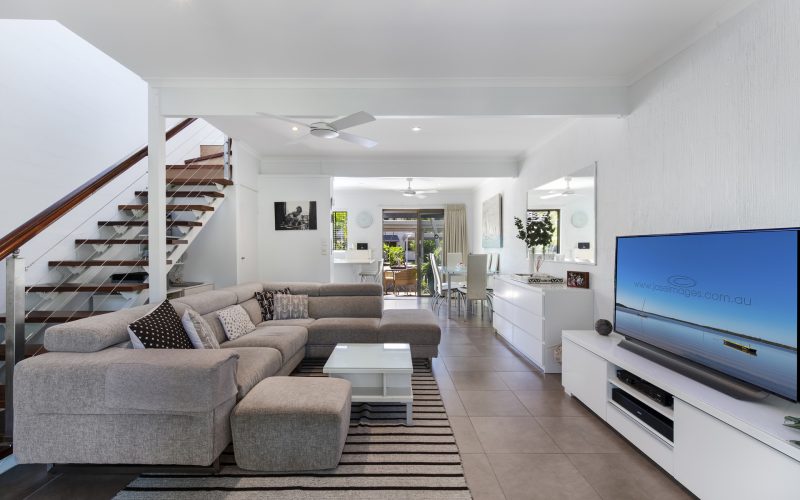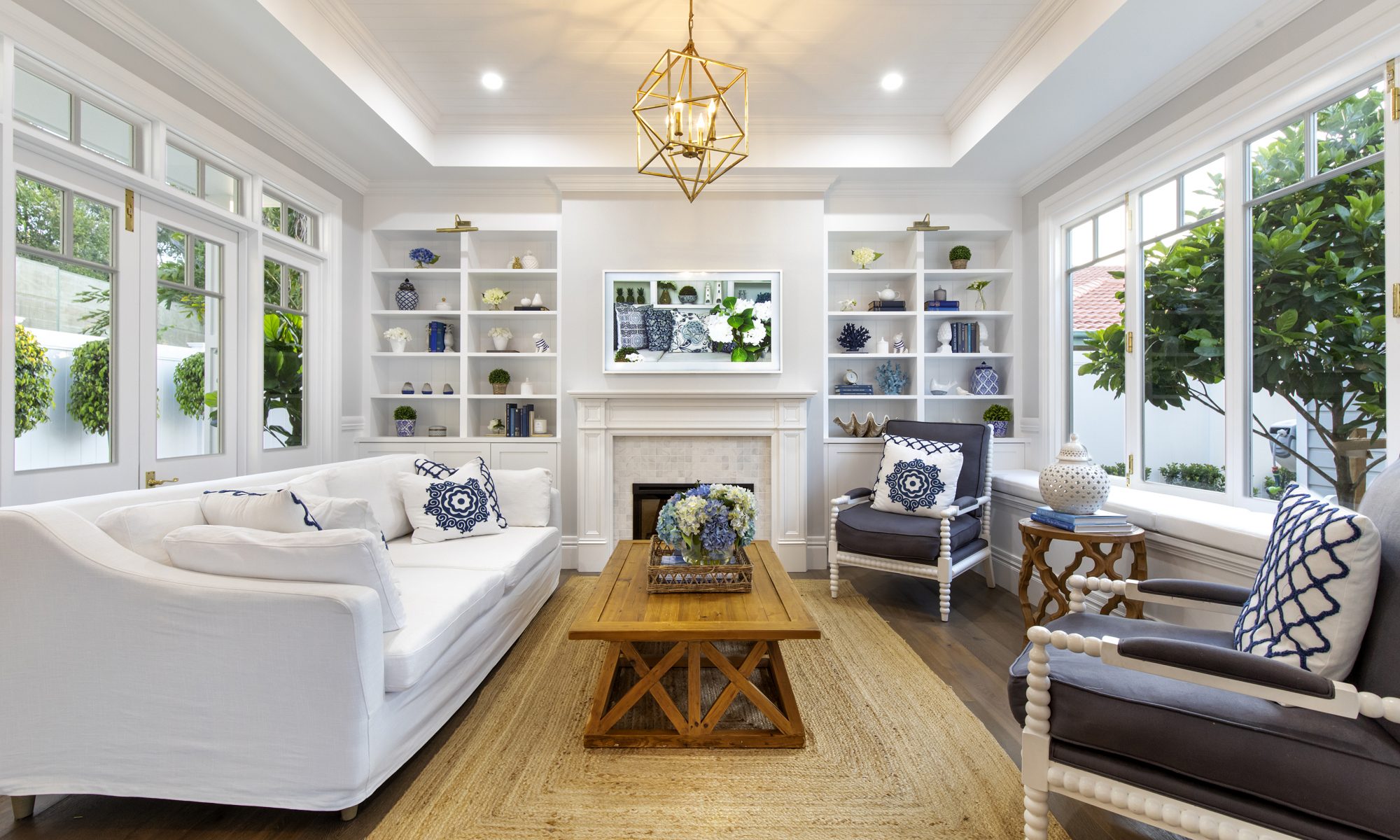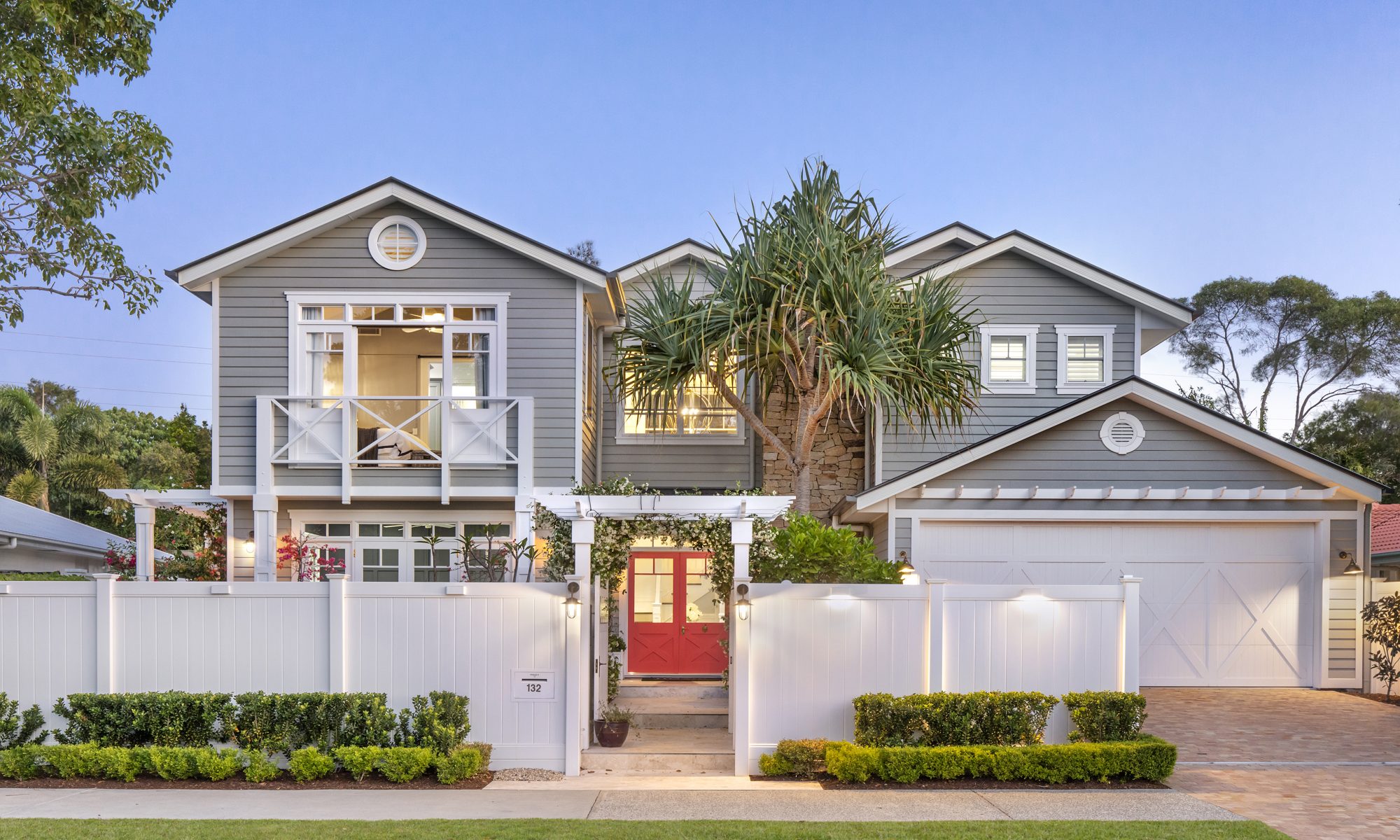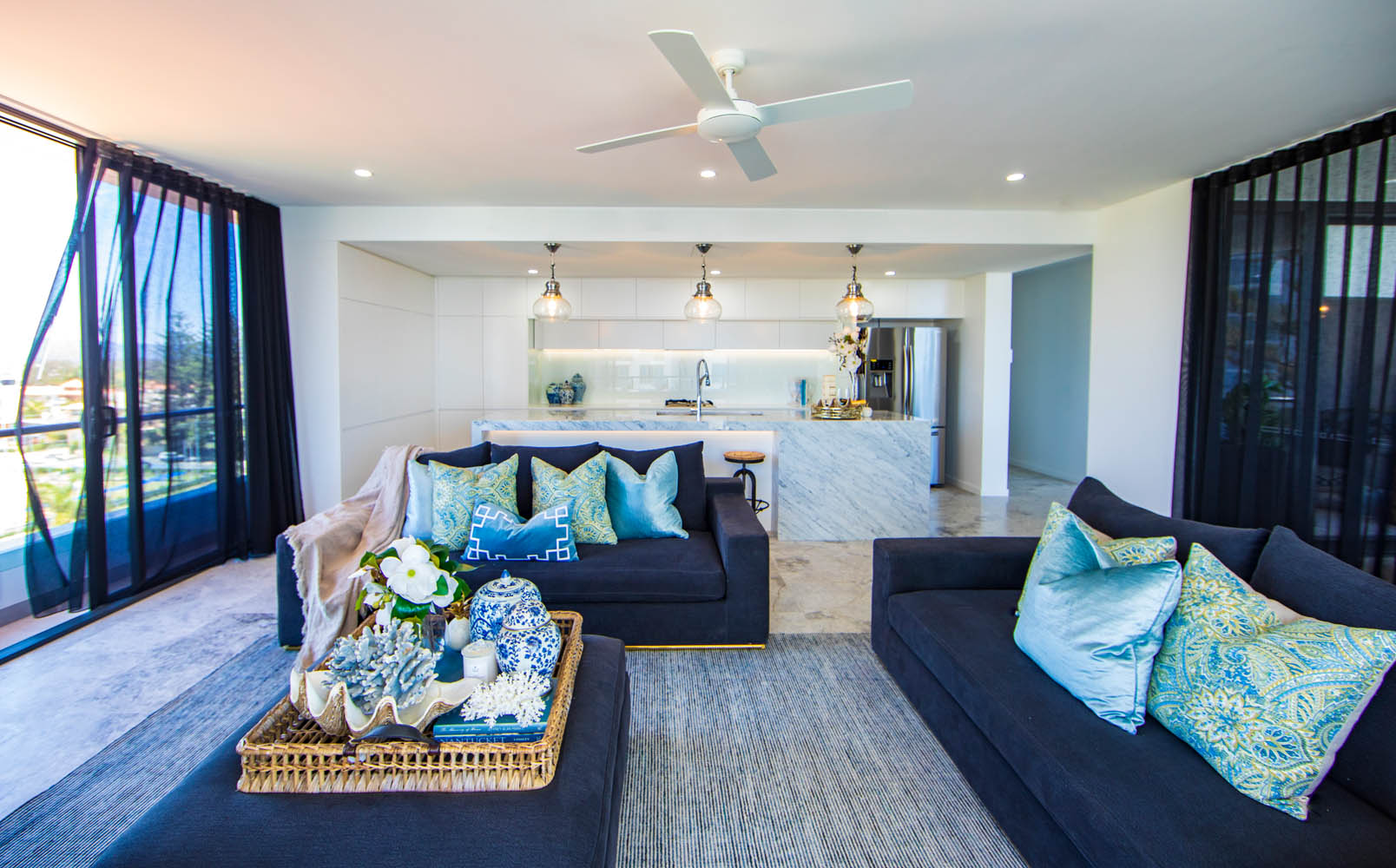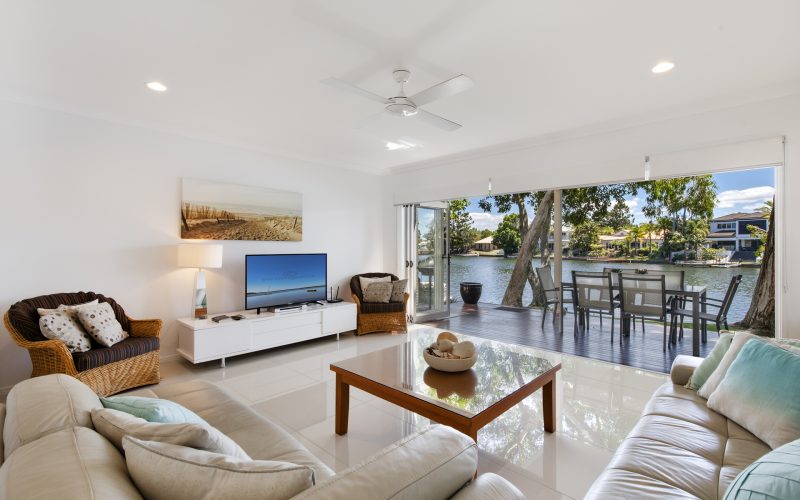To prepare your home for sale in Australia, start by decluttering and improving curb appeal. Consider staging with help from a real estate agent. Conduct a pre-sale inspection to address any issues.
Renovate and paint to boost home value. Use open house tips to showcase your property effectively. Companies can assist with preparing your house for sale, ensuring it meets buyers’ expectations. Follow a checklist for a smooth selling process.
Preparing Your Home For Sale
Your home is your greatest asset
In life and real estate, it is often said that your principal place of residence is possibly your biggest asset. As industry professionals, we find this true for so many people in the community who we represent.

With this in mind, you must do all you can to maintain the property throughout its lifetime, to protect and grow your asset. This way, at the time of eventual sale, you receive the best possible cash profit from your investment.
Your home could deliver you a tax-free windfall
Selling your home is a valuable opportunity for wealth and profit. Unlike other financial investments, your principal place of residence is free from capital gains tax and stamp duty. Therefore, a chance of a tax-free gain is rare.
Selling is a one-off opportunity for profit
Selling your home presents a unique opportunity to make a good deal of money. Typically every dollar your home sells for over the perceived market value is worth two dollars of your hard-earned labour.
Secure the dollars you deserve for the property you own. You get only one chance to sell for profit and then the value passes on to the next owner.
To prepare your home for sale, start with a checklist, easily found as a PDF online. If needed, consider hiring help to get your house ready, ensuring it’s appealing to potential buyers. If you’re moving before selling, ensure your house is staged within 30 days for a faster sale.

Once sold, navigate leaving your house smoothly. Efficiently prepping your home increases property value and expedites the selling process, potentially reducing costs. Additionally, consider landscaping and property photography for added appeal.
We are here to guide you through these steps and work closely with you to assist in making the process a seamless experience. For the complete guide, read steps 2 and 3.
Our team is committed to the highest customer service level and is happy to help with all of your real estate needs; please get in touch with the Reed & Co. team if you have any questions about the market.
Preparing your home for sale can be a breeze with the right approach. Start by staging your home for sale, enhancing curb appeal, and deep cleaning to impress potential buyers. Use a preparing house for sale checklist or hire professionals for minor home repairs before selling.
Consider real estate photography tips to showcase your property effectively. Increase home value before selling, and negotiate offers confidently for a smooth transaction.
Preparing Your Home for Sale
Preparing a home for sale is becoming more and more pivotal to achieving an exceptional result than ever before. A perfectly clean, decluttered, and well-maintained home inside and out leaves nothing to chance and nothing to spend.

More significantly, though, a home that is inviting and evokes the emotion of its buyer will statistically sell faster than a home that lacks due preparation and care. Creating that memorable first impression generally leaves a lasting one, so attention to detail is imperative to attracting the largest buyer pool and achieving a premium sales result.
We often engage professional interior designers and home stagers to provide advice and options to our clients in preparing their homes to sell. We also can provide contact details of trusted local tradespeople to assist with any maintenance and decorating needs.
Regardless of whether you’re considering putting your home on the market or utterly resolute on the idea of selling, this guide will guide you through the steps to maximize your outcome and ensure the result is the very best one.
Step 1 – What to Consider
Step 2 – Your Action Plan
Step 3 – Preparing Your Home for Market
To prepare your home for sale quickly and easily, start by using a comprehensive checklist. You can find free downloadable PDF checklists online to guide you through the process. Take inexpensive steps like decluttering and staging to enhance your property’s appeal.
Consider downsizing before selling to streamline the process. Additionally, familiarize yourself with common mistakes sellers make and explore alternative selling methods for a smooth transaction.
We are here to guide you through these steps and work closely with you to assist in making the process a seamless experience. For the complete guide, read steps 1, 2, and 3.
Our team is committed to the highest customer service level and is happy to help with all of your real estate needs; please get in touch with the Reed & Co. team if you have any questions about the market.
To prepare your home for profit, start with a comprehensive checklist. Consider deep cleaning, pre-listing repairs, and cost-effective upgrades to increase home value and attract potential buyers.
Boost curb appeal by staging your home and implementing inexpensive home improvement projects. Take advantage of virtual tours and open house strategies to showcase your property effectively. Consult a real estate agent for guidance on navigating the competitive housing market and maximizing profits while minimizing closing costs.
Preparing & Maximising Your Home for Profit
Regardless of whether you’re considering putting your home on the market or completely resolute on the idea of selling, this guide will guide you through the steps to maximize your outcome and ensure the result is the very best one. In the following blog post, we will outline everything to help you in this process, over three key phases.

Your Plan of Action
1. Think like a purchaser
The golden rule of thumb is: if something needs to be repaired, fix it! Walk through and be picky – try and see what a potential purchaser will see, not what you have overlooked for years.
Buyers will mentally add up their perceived costs of repairing all those minor flaws and end up with an amount that is generally much higher than their actual costs. You may believe the repairs are insignificant, however the buyer may question the maintenance and upkeep of the rest of the property.
Necessary, non-critical minor repairs and perceived owner neglect will either lower the price or lengthen the time taken to sell.
Look at the color palette throughout your home. If you have used striking, bold colors, it might be time to neutralize them. Your objective is to make your home appeal to the largest possible segment of the market. The market is always driven by buyer demand and a buyer finds it hard to look beyond bright carpeting and bold wallpapers.
2. Plan of action checklist
Outside

- The front of your house is one of the first things a buyer sees. Sweep and wash the driveway and walkways to remove debris, dirt, and stains. Remove any oil stains if possible. Repair and patch any cracks
- Check your fence for any loose or broken posts and replace any rotted wood
- Check gutters for leaks or damage and remove debris
- Lawn care: mow high and often. Feed the lawn with fertilizer, treat weeds, and aerate the lawn in high-traffic areas
- Trim your plants back with secateurs
- Promptly pull out weeds or spray with specialized weed killer as soon as they appear and before they set seed
- Mulch garden beds to prevent soil from drying out too quickly and to hinder weed growth
- Inspect exterior paint and touch up as needed
- Clean and seal decks if needed
- Cut back overhanging trees from the roofline
- Repair/replace any damaged window screen mesh
- Inspect walls and ceilings for cracks, leaks, mildew, or water stains
- Clean out your irrigation system twice a year to ensure your plants get the best quality water and at the same time remove material that can settle in the lines and block the filters.
- (Unscrew the drip or spray outlets, flush the line, then clean the filter)
- Inspect the roof for damage
- Winterize the pool
- Reseal concrete areas to prevent cracking and deterioration
Inside

- Check smoke detectors
- Clean and disinfect the dishwasher by operating it when it’s empty and putting bicarbonate soda in the
- detergent tray and vinegar in the rinse holder
- Vacuum refrigerator coils and empty waste containers
- Check doors and windows for cracked seals and peeling paint –
- repair as needed
- Dust/vacuum the tops of cupboards
- Move furniture that you don’t normally move and vacuum thoroughly
- Inspect bathroom tiles, kitchen tiles, and sinks – reseal where needed
- Soften potentially offending views, but always let light into your rooms, consider replacing heavy curtains with something lighter
- Wash and clean all windows, curtains, and blinds
- Clean light fittings and skylights. If your kitchen has fluorescent lighting fixtures, use ‘warm-white’ bulbs for a bright appearance
- Clean kitchen exhaust hood and filter
- Clean sliding doors and window tracks
- Clean debris from ceiling fan blades/air conditioner fan blades before using
- Check taps and plumbing supply lines for signs of leakage
- Test the pressure relief valve on your hot water system to ensure it hasn’t seized up
- Repair loose knobs, latches or
- handles on doors
- Make storage areas appear generous and well-planned, and remove and store all out-of-season clothing
- Remove any items from the floor area of the wardrobes – this will make them seem more spacious
- Hang an air freshener in the
- wardrobe for a pleasant fragrance ensuring wardrobes smell fresh and clean
- Ensure all wardrobe lights are in working order
- Add battery lights to wardrobes that lack built-in lighting, as illuminated wardrobes appear bigger and more attractive
3. Notes and Contacts
Getting your home ready for sale can sometimes require the help of specific trades. If you don’t know of anyone who you could use feel free to contact the Reed & Co. Team and we can provide you with a copy of our “little White Book”, a valuable reference tool for the home, filled with highly recommended tradespeople and local professionals.
When it comes time to market your property, there are no shortcuts to obtaining a great price.
A lot of preparation has to be undertaken to make sure your property hooks and pulls a potential buyer in. When a buyer sees your property online or in person, she or he must think, “That’s the one!”
Photographs of your property are one of the main ways to draw in a buyer. They matter because they are the first point of contact that a buyer has with your property. Therefore, you must present your property in the best possible way. Excellent presentation and high-quality photographs seduce a buyer into a home.
Preparing your home for photography or video goes hand-in-hand. If you’re preparing a property for photos, that’s exactly the way it should appear for every open home, for every buyer inspection, and throughout the marketing campaign.
To prepare your home for sale, start with a “prepare your home for sale checklist”. It’s essential to increase curb appeal by staging your home for sale and using real estate photography.
Implement inexpensive ways to prepare your home for sale like home decluttering tips and deep cleaning. Consider a pre-listing inspection and improve home value by disclosing any issues. Lastly, engage a real estate agent for negotiating offers and open house tips.
Prepare Your Home for Sale
Steps to prepare
1. Declutter and clean, clean, clean
A pristine, sparkling clean home says, “I care about this home. I’ve looked after it.” So, the person who purchases this home is going to benefit from the love, care, and attention you’ve given the home during your ownership.
2. Think about who you are appealing to
Think about who you think will want to buy the home and make the surroundings appeal to that potential buyer. Market the home to suit the purchaser.

- Is it a single-person’s apartment?
- Is it designed for couples?
- Is it a first homebuyer’s home?
- Or is it a family home?
Think about your buyer and the atmosphere you’re trying to create.
3. The front of the home must create a strong first impression
Most buyers, particularly women, make up their minds between getting out of the car and about 30 seconds after walking through the front door. What buyers see in the photographs on the web has to match what they see when they get out of the car. You have to make an impact.
Photos should focus on the strengths and minimize any potential weaknesses.
Make sure the front yard is clean. Lawns should be manicured and lush. Hedges and edges must be trimmed, neat, and tidy. Clear out the cobwebs, and get rid of peeling paint and grime. Sugar soap or wash the gutters, eaves, fascia, weatherboards, and Colourbond roofs.
The front of the house must be pristine. With tiled roofs ascertain whether it is worth the investment of getting it refinished and resprayed. Generally, in most cases, it’s not going to be too obvious in photos, but it may become an issue through a sales negotiation.
Declutter the verandah. Make sure nothing is on there that doesn’t belong there. Paint the doorjambs in a high gloss.
Make sure the front yard is clean. Lawns should be manicured and lush. Hedges and edges must be trimmed, neat, and tidy. Clear out the cobwebs, and get rid of peeling paint and grime. Sugar soap or wash the gutters, eaves, fascia, weatherboards, and Colourbond roofs. The front of the house must be pristine.
4. Present the home to suit the purchaser
Once inside the home, minimize the amount of furniture in the rooms and utilize the furniture that’s going to make an impact. You want to create a scenario that will stimulate the kind of emotions that you’re targeting in your buyer.
For example, if you are marketing a home to a family, keep the chalkboard and some posters in a child’s bedroom because you want to create that family ambiance.

5. Kitchen
Declutter! A fridge should not be noticeable – it should be white, silver, or neutral. Remove all personal items – the pen-stands, the sunglasses, the phone chargers. Add a few touches, depending on who you are appealing to. Add a fruit bowl fresh flowers or a plant.
Think about your buyer and the atmosphere you’re trying to create. Clean, clean, clean that stainless steel, give it a good scrub-down. All the surfaces should be gleaming.
Remove the personal touches, whether it’s kids’ report cards or the magnetic stickers from the fridge. Remove the tea towels, remove the pet bowls, and remove the rubbish bin and the dirty dishes from the shots!
6. Lounge room
If you have any kind of view from your lounge room over the backyard, the beaches, or the hills – maximize it. Clean the windows and be careful about window treatments. Remove lace curtains as they date the home and minimize what the photographer can do to show the views. Photographers will lift those blinds, and pull back the verticals, so the backyard, the views, the deck, and the outside entertaining areas can be seen.
7. Bathroom
The bathroom is one of the greatest challenges, because the bathroom is always a work in progress, particularly for family homes. This is one room that should be cleaned by professionals. Bathrooms need to feel germ-free; they need to be almost clinical. You want to be able to see through the shower glass so that it doesn’t impact the atmosphere you’re creating for the rest of the bathroom – it has to be translucent. Polish the mirror. Make sure that any cobwebs or dust, for instance on the exhaust fan, has been removed. Any chrome items must be given a good polish.
Bathrooms are also challenging because there are so many bright, shiny reflective surfaces. The quality of the photographer is revealed with shots of the bathroom. Any failure to catch every scrap of grime dirt or streak will show up in a photo. Decluttering is most important in the bathroom. In such a small space, any clutter is going to be far more obvious. Take out the toothbrushes and any other personal items that may detract.
8. Bedrooms
Declutter and clean and turn on the bedside lights as they create a beautiful glow. Contrasting bed linen and the wall treatments work well but be careful. Assess the view out of the bedroom windows – if it’s not a particularly attractive view, take the focus away from the window with a nice big painting, photo, or something else that will draw the attention away.

If you want to focus your attention on a hill view a beach view, or just a nice outlook, take away any objects that will distract the eye from the window. Polish the mirrors. Make sure that any cobwebs or dust, for instance on the exhaust fan, has been removed. Any chrome items must be given a good polish.
9. Entertainment areas
With these areas, try and create a certain ambiance that will appeal to your buyer. Think about the atmosphere you’re trying to create. Whether it’s the deck, the verandah, or a balcony, how does it integrate with the rest of the atmosphere you’re trying to sell? For example, if it’s a waterfront home, you want to be able to show a balcony set up with a barbecue and chairs so that people can imagine themselves using it with friends on a summer evening.
10. The pool
Make sure you give some attention to the pool – it’s got to be sparkling before it is photographed and when the house goes on the market. Make sure all pool accessories – the empty chlorine bottles, the chemical containers, the pool cleaners, the brooms, the kids’ boogie boards, and the floatation rings are all packed away. Make sure it remains like that for the rest of the marketing campaign.
11. Keep the lights on
Lights are essential – even in the daytime, you’re always going to be shooting with lights on. Most professional photographers are going to create an ambiance somewhere between using their flash equipment and utilizing the available sunlight as well as the lights.
12. Replace all the faulty globes
Make sure they’re fresh, and if the property is vacant make sure the electricity is still connected.
Real Estate Statistics: Top Insights for 10/67 Gibson Road, Noosa Waters






























